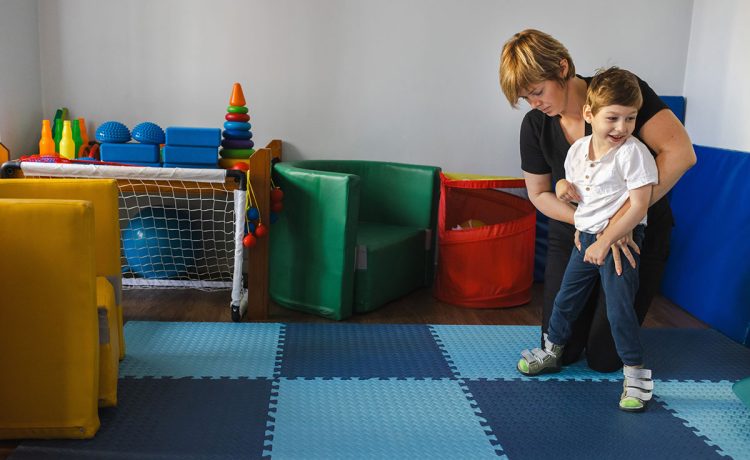When families consider legal action for cerebral palsy birth injuries, there are several important initial steps to take. These steps help lay the groundwork for a strong case and ensure that all necessary information is gathered.
Gathering Medical Records and Evidence
- Collect Medical Records: Parents should gather all medical records related to the pregnancy, delivery, and postnatal care. This includes hospital records, doctor’s notes, and any test results. These documents are essential for establishing the timeline and quality of care.
- Document Events: Write down a detailed summary of the events leading up to, during, and after the birth. This summary should include any concerns or issues noticed during the process. This written account will be useful for the lawyer in evaluating the case.
Writing a Summary of Events
- Detail Key Moments: Include specific details about the birth process, any complications, and the immediate care provided to the child. This summary can serve as a reference for both the family and the legal team.
- Prepare Questions: Parents should also write down any questions they have about the legal process, the lawyer’s experience, and what to expect moving forward.
Consulting a Cerebral Palsy Lawyer
- Seek Professional Help: It is crucial to consult a cerebral palsy lawyer who specializes in birth injury cases. These attorneys can provide a preliminary assessment of the case based on the gathered details and medical records. They understand the complexities involved in proving negligence and can guide families through the legal process effectively.
- Evaluate Options: A lawyer can help families understand their options and the potential for compensation, which can cover medical expenses, therapy, and other costs associated with caring for a child with cerebral palsy.
Taking these initial steps can significantly impact the outcome of a cerebral palsy case, making it essential for families to act promptly and gather all necessary information.
Building a Strong Cerebral Palsy Case
Evaluating Medical Records
To build a strong case for a cerebral palsy lawsuit, it is essential to thoroughly evaluate medical records. This includes:
- Collecting all relevant medical documents from the pregnancy, delivery, and postnatal care.
- Identifying any signs of negligence or malpractice in the care provided.
- Documenting the timeline of events to establish a clear connection between the medical care and the injury.
Consulting Medical Experts
Engaging with medical experts can significantly strengthen a cerebral palsy case. Steps include:
- Finding specialists who understand cerebral palsy and its causes.
- Gathering expert opinions on whether the medical care received was appropriate.
- Using expert testimonies to support claims of negligence.
Establishing Negligence
Proving negligence is crucial in a cerebral palsy lawsuit. This involves:
- Demonstrating that the medical professionals failed to meet the standard of care expected.
- Showing how this failure directly led to the injury.
- Collecting evidence that supports the claim, such as witness statements and expert evaluations.
By following these steps, families can create a solid foundation for their case, increasing the chances of a favorable outcome. Understanding the cerebral palsy malpractice lawsuit settlement amounts can also provide insight into potential compensation, which averages around $5 million but varies based on individual circumstances.
Filing the Cerebral Palsy Lawsuit
Filing a lawsuit for a cerebral palsy case involves several important steps. Here’s a breakdown of the process:
Preparing Legal Documents
- Case Evaluation: The first step is for the lawyer to review all medical records and consult with medical experts. This helps determine if there was any negligence during the birth process.
- Gathering Evidence: The attorney will collect necessary documents, such as diagnostic reports and maternal health records, to support the claim.
- Drafting the Complaint: Once the evidence is gathered, the lawyer will draft a legal complaint that outlines the case against the medical professionals involved.
Submitting the Lawsuit
- After preparing the legal documents, the lawyer will file the lawsuit in the appropriate court. This officially starts the legal process.
- The family becomes the plaintiff, while the medical professionals or institutions involved are the defendants.
Defendants’ Response
- Once the lawsuit is filed, the defendants typically have about 30 days to respond. They may admit to the claims, deny them, or file a motion to dismiss the case.
- If the defendants refuse to settle, the case will move forward to the next stages of the legal process.
Filing a lawsuit can be a complex process, but it is essential for seeking justice and compensation for the injuries caused by negligence. For more information on cerebral palsy, parents can explore resources that discuss how to determine the value of their case and the importance of hiring an experienced attorney.
Navigating the Discovery Phase
In cerebral palsy birth injury cases, the discovery phase is a crucial part of the legal process. This is when both sides gather information to build their cases. Here’s what happens during this phase:
Exchanging Information and Evidence
- Both parties must share relevant information. This includes medical records, treatment histories, and any other documents that can help clarify the case.
- Requests for documents are made, and both sides must comply. This ensures that everyone has access to the same information.
Depositions and Testimonies
- Depositions are formal interviews where witnesses answer questions under oath. This can include doctors, nurses, and other relevant parties.
- These testimonies help to establish facts and clarify what happened during the birth process.
Expert Witness Involvement
- Expert witnesses may be called to provide their opinions on medical standards and practices. They can help explain whether negligence occurred.
- Their insights can be vital in proving the case, especially in complex medical situations.
Navigating this phase can be challenging, but it is essential for building a strong case. Parents should work closely with their cerebral palsy lawyer to ensure all necessary information is gathered and presented effectively. This phase sets the stage for potential birth injury lawsuit settlements, which can provide much-needed support for families affected by medical malpractice during childbirth.
Settlement Negotiations and Mediation
In cerebral palsy cases, many lawsuits are resolved through settlement negotiations rather than going to trial. This process can save time, money, and stress for everyone involved. Here’s a closer look at how this works:
Negotiation Strategies
- Understanding Needs: Both sides should clearly understand what they want from the settlement. This includes the amount of money needed for medical care and other expenses.
- Open Communication: Keeping lines of communication open can help both parties feel more comfortable discussing terms.
- Flexibility: Being willing to adjust demands can lead to a quicker resolution.
Mediation Process
- Neutral Mediator: A mediator, who is neutral, helps both parties discuss their issues and find common ground.
- Confidential Meetings: Mediation sessions are private, allowing for honest discussions without fear of public exposure.
- Voluntary Agreement: Any agreement reached in mediation is voluntary, meaning both parties must agree to the terms.
Reaching a Settlement Agreement
- Written Agreement: Once both sides agree, the terms are put into a written document.
- Final Review: Each party should review the agreement carefully, often with their lawyers, before signing.
- Closure: After signing, the case is closed, and the plaintiff receives the agreed compensation without the need for a trial.
Trial Process in Cerebral Palsy Cases
Presenting Evidence in Court
During the trial, both sides will have the chance to show their evidence. This includes:
- Medical records that show the child’s condition.
- Testimonies from doctors and other experts.
- Any other documents that support the claims.
The goal is to convince the judge or jury that negligence occurred during the birth.
Arguments from Both Sides
Each side will present their arguments:
- Plaintiff’s Argument: The plaintiff (the family) will explain how the medical team’s actions led to the child’s cerebral palsy. They will highlight the evidence gathered during the case.
- Defendant’s Argument: The defendant (the medical professionals) will argue that they acted properly and that the child’s condition was not due to their actions.
Both sides will try to persuade the judge or jury to see their point of view.
Judge or Jury Decision
After hearing all the evidence and arguments, the judge or jury will make a decision. They will decide:
- If the medical team was negligent.
- What compensation, if any, the family should receive.
This decision can have a big impact on the family’s future, especially regarding medical care and support for the child.
Types of Compensation in Cerebral Palsy Cases
When families pursue a cerebral palsy lawsuit, they often seek various types of compensation to help cover the costs associated with their child’s condition. Here are the main categories of compensation that may be available:
Medical Expenses
Compensation can cover both current and future medical costs, which may include:
- Surgeries
- Ongoing therapy sessions (like physical and occupational therapy)
- Medications
- Assistive devices (like wheelchairs or communication aids)
Long-term Care Costs
Families may also receive compensation for long-term care needs, which can involve:
- Specialized equipment
- Home modifications to accommodate the child’s needs
- Caregiver costs for daily assistance
Pain and Suffering
This type of compensation addresses the emotional and physical distress experienced by the child. It recognizes the challenges they face due to their condition.
Lost Earning Potential
If the child’s disability affects their ability to work in the future, families may seek compensation for the potential income their child could have earned throughout their life.
In summary, compensation from a cerebral palsy lawsuit can significantly help families manage the financial burdens that come with caring for a child with special needs.
Supporting Your Child’s Case After Hiring a Lawyer
Once a family has hired a lawyer for a cerebral palsy case, there are several important steps they can take to support their child’s case effectively.
Maintaining Communication with Your Lawyer
- Stay in Touch: Regularly check in with your lawyer to understand the progress of the case.
- Ask Questions: If anything is unclear, don’t hesitate to ask for explanations.
- Provide Updates: Inform your lawyer about any changes in your child’s condition or new medical treatments.
Providing Additional Evidence
- Keep Detailed Records: Document all medical appointments, treatments, and any changes in your child’s health.
- Collect Relevant Documents: Gather any medical records, bills, and reports that may help your case.
- Witness Statements: If possible, obtain statements from people who can support your child’s situation.
Preparing for Depositions
- Understand the Process: Learn what a deposition is and how it works, as it may involve answering questions under oath.
- Practice Responses: Work with your lawyer to prepare for potential questions, ensuring you feel confident.
- Stay Calm: Remember that the goal is to provide truthful and clear information about your child’s needs and experiences.







